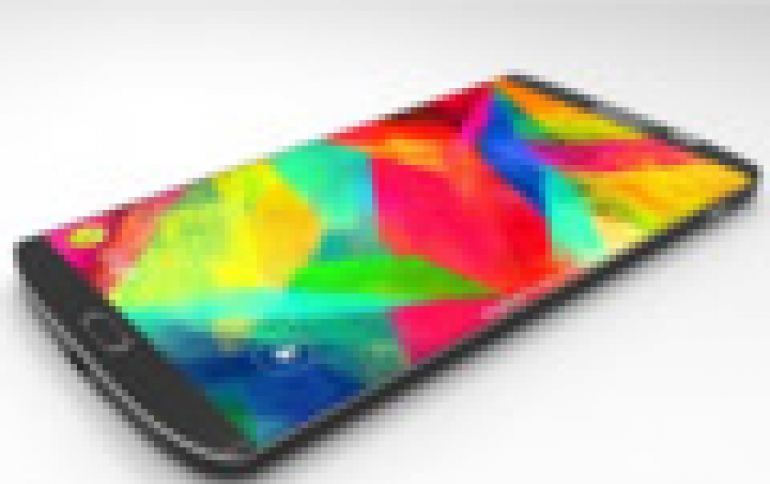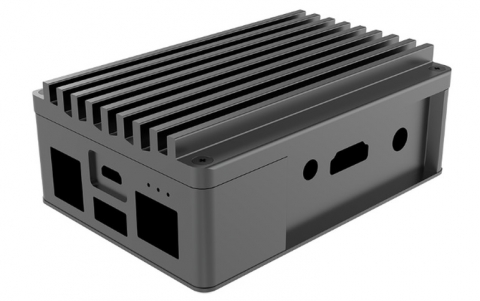
Samsung's Galaxy S6 Sales Suggest Great Start
Sales of Samsung Electronics's flagship Galaxy S6 smartphones reached 6 million units at the end of April, less than a month after their launch, researcher Counterpoint said on Tuesday. According to Counterpoint Research, the Galaxy S6 series combined (S6 and S6 Edge) has reached second place in overall smartphone series sales behind iPhone 6 series, less than a month after launch.
The standard flat screen Galaxy S6 captured the third whereas the curved edge Galaxy S6 Edge captured the fourth position in terms of sales rankings.
The Samsung Galaxy S6, launched on April 10th this year, has managed to exceed the sales of last year’s flagship Galaxy S5 in the same period in 2014. Only 20 countries were included in the initial roll-out of the Galaxy S6 compared to the 125 countries in which the Galaxy S5 launched last year.
"Considering that fewer countries were in the initial product release, it has had a slower roll-out and lower marketing budget than the Galaxy S5, the Galaxy S6 series can be considered to be performing better than the Galaxy S5," said Counterpoint’s Research Director Tom Kang.
Counterpoint’s channel survey shows a total of 6 million units were sold by the end of April. Kang believes this is about 60% of the units Samsung has shipped out of its factories. So 40% remain as inventory in the distribution channels which is not unusual for a new product in its first stages. The standard Galaxy S6 sold slightly more than the S6 Edge, but the S6 Edge showed much higher initial interest. The Galaxy S6 series was 21% of the Samsung’s total smartphone sales during April 2015 compared to Galaxy S5 which was only 16% of the Samsung’s smartphone sales in April 2014.
Neil Shah, Research Director with Counterpoint said, "We believe the Galaxy S6 Edge could have sold more if there weren’t supply issues, but it is on track to become more popular than the standard version as Samsung’s marketing engine kicks-in at full-speed. The curved glass is certainly going to be a challenge for production as it is the first of its kind and navigating unchartered waters, so managing the supply with shifts in demand between the two models will be the key to maintaining momentum."
Adding further comments, Peter Richardson Research Director with Counterpoint said. "The Samsung Galaxy S6 series has a chance to become the top selling smartphone overtaking Apple’s iPhone 6 series, if production issues are solved. However the window of opportunity to do so is short as consumers don’t have much patience in a market with many alternatives. Nevertheless, we still believe Galaxy S6 is on its way to achieve 50 million unit sales by the end of this year."
The Galaxy S6 series is mostly cannibalizing other Android phones, including Samsung’s other flagship models. The Galaxy S5 sales dropped sharply compared to March. This was expected but the Galaxy Note 4 and Galaxy A-series were also affected as sales dropped between 30% and 40%. This is a concern as Samsung’s overall market share is not growing despite the relatively successful launch of the Galaxy S6 in April.
| Rank | Brand | Model |
|---|---|---|
| 1 | Apple | iPhone 6 |
| 2 | Apple | iPhone 6 Plus |
| 3 | Samsung | Galaxy S6 |
| 4 | Samsung | Galaxy S6 Edge |
| 5 | Xiaomi | Redmi 2 |
| 6 | Samsung | Note 4 |
| 7 | Apple | iPhone 5S |
| 8 | Samsung | Galaxy S5 |
| 9 | Xiaomi | Redmi Note |
| 10 | Microsoft | Lumia 435 |
(table source: Monthly Market Pulse May 2015 edition)
On the other hand, Apple’s iPhone 6 series continued to generate healthy demand topping the list of world’s best-selling smartphones in April 2015. Apple iPhone 6 series volumes were 51% higher compared to last year’s iPhone 5s & 5c volumes combined.
Xiaomi’s Redmi 2 is the No. 5 bestseller as it is the worthy successor of the most popular Redmi and the Redmi Note is also listed as the No.9 bestseller as it continues its progress in the phablet market.
Microsoft’s Lumia 435 entered the top 10 list for the first time during April as it saw healthy demand in key prepaid markets globally.
Just outside of the top 10 list were the phablets Motorola’s Nexus 6, Huawei Mate 7 followed by Xiaomi Mi 4.




















